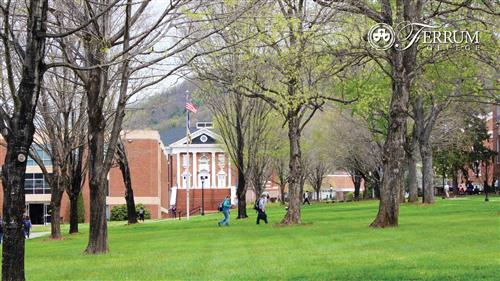-
Choosing a college that is the right "fit" for you is a big decision. A trip to the library, Career Center, or Counseling Office can help you find the most resources available to you.
Step 1: Determine what you might like to study or major in at college. Yes, many students enter college as “undecided,” and that's fine, but if you have some idea of a career or a major, that information can help in finding colleges that offer (and even specialize) in that field.
**If you're still not sure of what you would like to major in, you can take a career assessment test at CareerCruising.com - Username: Ayala Password: Careers
Step 2: Develop a list of criteria you want to use to evaluate and weed out colleges. Do you want to live close to home, or far away? Do you want a large university or a small college? What about costs? Here's a list of common criteria:- degrees offered
- majors/minors
- location (rural or urban setting)/distance from home
- size of the student population (from small at 1,000 to large at 35,000+)
- public vs. private
- costs (tuition, room and board, etc.)
- financial assistance packages
- campus resources (labs, libraries, computer access, etc.
- social life (Greek organizations, sports, school spirit, etc.)
- religious affiliation/independent
- housing options (dorms, apartments, living at home)
- realistic entry expectations (based on typical student admitted)
**Public vs. Private - Compare the differences.
University of California System - the UC system, a research-based university system, has nine undergraduate campuses throughout the state.
www.universityofcalifornia.edu/admissions
California State University System - The California State University is the largest system of senior higher education in the country with 23 campuses. Under the 1961 Master Plan for Higher Education, CSU draws students from the top third of California's high school graduates, and prioritizes admission to eligible upper division California Community College transfer students. CSU has more than 430,000 students, 42,000 employees, and 2 million alumni.
For more valuable information check out www.csumentor.edu
The CSU, the University of California, and the California Community College systems comprise the state-supported systems of higher education in California. In addition, there are more than 75 independent non-profit universities. For more information about CSU and other California colleges, see www.calstate.edu or www.californiacolleges.edu.
(For EAP Information see http://www.calstate.edu/eap/index.shtml)
Private Schools - these schools usually have a smaller, more selective enrollment; smaller class sizes, but at a higher cost. Below is a list of just some of the schools that are considered private.
*The Common Application is used for most private universities (excluding Christian colleges)
Go to: www.commonapp.org
Private Christian Universities - for students who seek a Christ-centered, faith-based college or university.
Select a School...
Select a School
- Alicia Cortez Elementary
- Anna A. Borba Elementary
- Butterfield Ranch Elementary
- Chaparral Elementary
- Country Springs Elementary
- Doris Dickson Elementary
- E. J. Marshall Elementary
- Eagle Canyon Elementary
- Edwin Rhodes Elementary
- Gerald F. Litel Elementary
- Glenmeade Elementary
- Hidden Trails Elementary
- Howard Cattle Elementary
- Levi H. Dickey Elementary
- Liberty Elementary
- Michael G. Wickman Elementary
- Newman Elementary
- Oak Ridge Elementary
- Rolling Ridge Elementary
- Walnut Avenue Elementary
- Cal Aero Preserve Academy
- Lyle S. Briggs Fundamental
- Canyon Hills Junior High
- Magnolia Junior High
- Ramona Junior High
- Robert O. Townsend Junior High
- Woodcrest Junior High
- Boys Republic
- Buena Vista Continuation High
- Chino High School
- Chino Hills High
- Don Antonio Lugo High
- Ayala High School
- LegacyAcademy
- Biomedical Science and Technology Academy
- Chino Valley Adult School

 CVUSD HOME
CVUSD HOME